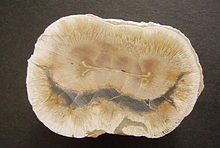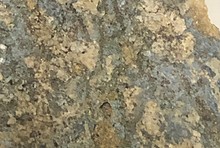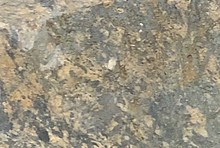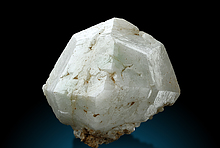Home PageAbout MindatThe Mindat ManualHistory of MindatCopyright StatusWho We AreContact UsAdvertise on Mindat
Donate to MindatCorporate SponsorshipSponsor a PageSponsored PagesMindat AdvertisersAdvertise on Mindat
Learning CenterWhat is a mineral?The most common minerals on earthInformation for EducatorsMindat ArticlesThe ElementsThe Rock H. Currier Digital LibraryGeologic Time
Minerals by PropertiesMinerals by ChemistryAdvanced Locality SearchRandom MineralRandom LocalitySearch by minIDLocalities Near MeSearch ArticlesSearch GlossaryMore Search Options
The Mindat ManualAdd a New PhotoRate PhotosLocality Edit ReportCoordinate Completion ReportAdd Glossary Item
Mining CompaniesStatisticsUsersMineral MuseumsClubs & OrganizationsMineral Shows & EventsThe Mindat DirectoryDevice SettingsThe Mineral Quiz
Photo SearchPhoto GalleriesSearch by ColorNew Photos TodayNew Photos YesterdayMembers' Photo GalleriesPast Photo of the Day GalleryPhotography
╳Discussions
💬 Home🔎 Search📅 LatestGroups
EducationOpen discussion area.Fakes & FraudsOpen discussion area.Field CollectingOpen discussion area.FossilsOpen discussion area.Gems and GemologyOpen discussion area.GeneralOpen discussion area.How to ContributeOpen discussion area.Identity HelpOpen discussion area.Improving Mindat.orgOpen discussion area.LocalitiesOpen discussion area.Lost and Stolen SpecimensOpen discussion area.MarketplaceOpen discussion area.MeteoritesOpen discussion area.Mindat ProductsOpen discussion area.Mineral ExchangesOpen discussion area.Mineral PhotographyOpen discussion area.Mineral ShowsOpen discussion area.Mineralogical ClassificationOpen discussion area.Mineralogy CourseOpen discussion area.MineralsOpen discussion area.Minerals and MuseumsOpen discussion area.PhotosOpen discussion area.Techniques for CollectorsOpen discussion area.The Rock H. Currier Digital LibraryOpen discussion area.UV MineralsOpen discussion area.Recent Images in Discussions
Techniques for CollectorsInterseting website
29th May 2012 17:19 UTCRon Layton

30th May 2012 20:06 UTCDonald Peck
31st May 2012 01:44 UTCSteve Hardinger 🌟 Expert

31st May 2012 15:32 UTCDonald Peck
31st May 2012 17:02 UTCSteve Hardinger 🌟 Expert
1st Jun 2012 05:39 UTCRon Layton

2nd Jun 2012 19:42 UTCJohn Attard Expert
I like your comparison of blowpipe analysts and politicians!
Now, regarding burners. By far my favorite is a propane burner that one can buy from anywhere in the US with a tip by "Benzomatic"
There are various kinds but if you decide to go this way I suggest to get the one that is NOT self igniting because that one though more expensive does not produce a pointed and controllable flame for experimental.purposes. To obtain the luminous flame you may need to partially close the airhole with some Al foil. The burner is a very versatile tool for all things not just mineralogical.
John Attard.

2nd Jun 2012 21:42 UTCHoward Heitner

2nd Jun 2012 23:36 UTCJim Robison
It has been too many decades since I last used a blowpipe, although I still have one. My recollection, upon reading your comments, was that a bunsen burner - which I used - based on natural gas (methane) worked quite well for either oxidizing or reducing tests. Don Peck's book on Mineral Identification has a good clear explanation of the various parts of the flame profile, and I do not recall much difficulty, with a little practice, in being able to generate either an oxidizing or reducing flame by aiming the blowpipe tip into the appropriate part of the flame, and by manipulating the position of the test sample in the blowpipe flame. Use of a small charcoal block also greatly enhances development of a reducing environment when needed.
The reference on blowpipes at the top of this thread includes an excellent e-booxs citation to an early (1850's) comprehensive manual of the use of a blowpipe. I couldn't get the figures to come up, but the text is imminently readable.
I haven'd used a propane torch, but suspect that with practice a user can also develop a clearly defined flame profile allowing the proper test flame.

3rd Jun 2012 07:15 UTCJohn Attard Expert
As far as I know "water gas" was never supplied to the public as town gas because its 50% CO was understandably considered too toxic. Many places including the labs that these workers used was coal gas; granted that this probably varied from place to place.
Back to use of propane you would be surprised how good a reducing agent it is used with the blowpipe over charcoal. One may mention that the species in the flame may not be propane itself but highly reactive species generated from it.

3rd Jun 2012 10:30 UTCBart Cannon
"Identification and Qualitative Chemical Analysis of Minerals"
Orsino C. Smith, Van Nostrand, 1953.
It has lovely color plates showing the sublimates from blowpipe tests of various mineral elements as well as borax beads..
Plus details on circular breathing.
Bart
6th Jun 2012 01:50 UTCEugene & Sharon Cisneros Expert
The attached photo shows how I developed my circular breathing and blowpipe technique.
Cheers,
Gene
6th Jun 2012 07:13 UTCRock Currier Expert
Don't use your technique on micromounts. It is only good for boulder size specimens.

18th Jun 2012 01:56 UTCHoward Heitner
Water gas was delivered to homes in many countries, before the 1940's. Putting ones head in the oven was a common method of committing suicide.




Mindat.org is an outreach project of the Hudson Institute of Mineralogy, a 501(c)(3) not-for-profit organization.
Copyright © mindat.org and the Hudson Institute of Mineralogy 1993-2024, except where stated. Most political location boundaries are © OpenStreetMap contributors. Mindat.org relies on the contributions of thousands of members and supporters. Founded in 2000 by Jolyon Ralph.
Privacy Policy - Terms & Conditions - Contact Us / DMCA issues - Report a bug/vulnerability Current server date and time: April 23, 2024 11:55:22
Copyright © mindat.org and the Hudson Institute of Mineralogy 1993-2024, except where stated. Most political location boundaries are © OpenStreetMap contributors. Mindat.org relies on the contributions of thousands of members and supporters. Founded in 2000 by Jolyon Ralph.
Privacy Policy - Terms & Conditions - Contact Us / DMCA issues - Report a bug/vulnerability Current server date and time: April 23, 2024 11:55:22











